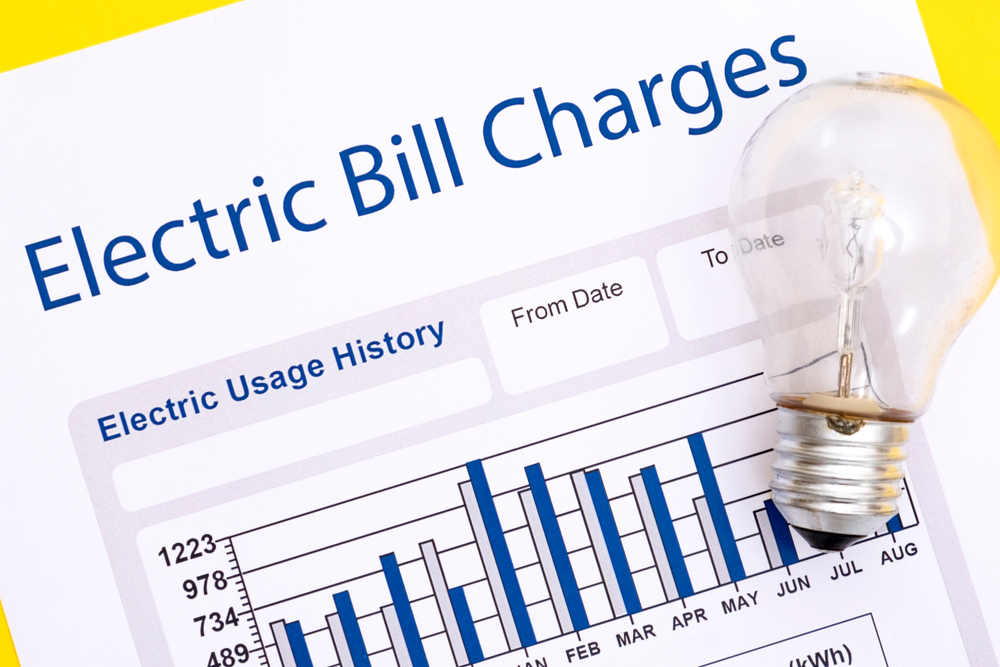How Much is the Average Electric Bill Per Month?
If you’ve lived in the same home for years, it’s easy to estimate how much your electric bill will be every month. But if you decide to move, it’s crucial that you understand how much you should expect to pay for electricity in your new home. Here’s what you need to know to calculate your average electric bill:
How Much Is An Electric Bill?
According to the Energy Information Administration (EIA), the average electric bill for U.S. households in 2018 was $117.65 per month. This may seem high now, but it could get even worse in the future. Many experts believe that the average electricity bill will increase over the next several years.
Some geographical regions of the U.S. had higher averages than others, though. For example, the average for the Pacific noncontiguous states, which includes Hawaii and Alaska, was $152.22 per month. The average for states in the east north central, including Illinois, Indiana, Michigan, Ohio, and Wisconsin, was $106.03 per month.
See how your electric bill compares to the average bill in your region to determine if you need to make changes in order to bring your electricity bill down.

What Uses the Most Electricity In A House?
It’s important to understand what you are spending your money on when you pay your electric bill every month.
You may not be surprised to learn that heating and cooling your home accounts for about 42% of your electric bill. Another large share of your electric bill—about 21%—goes towards powering electronics such as TVs, computers, printers, toasters, and other small devices.
Your water heater also accounts for a big share of your monthly bill. On average, heating the water in your home accounts for about 13% of your electricity use.
The remaining 12% of your bill is used to power larger appliances, such as the refrigerator, washer, dryer, and dishwasher.
Keep in mind that this is the breakdown of the average utility bill, so the exact percentages may vary depending on your lifestyle.
What Factors Can Affect the Cost of Electricity?
There are a number of factors that can affect the cost of electricity, and thus the cost of your monthly electricity bill. Some of these factors include:
- Demand: The cost of electricity increases as the demand for electricity grows, which is why prices are usually highest in the summer when more people need electricity to stay cool.
- Local regulations: Some cities and states regulate the pricing of electricity, which can impact how much you will pay every month.
- Transmission and distribution: The systems that distribute electricity to homes across the country need regular maintenance, which can drive up the cost of electricity for consumers.
- Type of customer: Residential customers typically pay more for electricity because it costs utility providers more to provide electricity to these customers compared to industrial customers.
- Weather conditions: The weather can affect how much power is needed to produce and distribute electricity to customers, which can affect how much customers are charged. For example, rainy conditions can reduce the cost of generating electricity with hydropower.
These factors are out of your control. For example, there’s nothing you can do to change the weather conditions in order to save money on your electric bill. But fortunately, there are other ways to lower your electric bill.
How Can You Lower Your Electric Bill?
There’s no need to panic if your electric bill is climbing higher and higher every month. Instead, focus on following these tips to reduce your electricity usage and drastically lower your monthly electric bill:
- Hang your laundry up to dry instead of putting them in the dryer, which is powered by electricity.
- Turn on ceiling fans in the summer so your air conditioner doesn’t have to consume as much electricity to keep you cool.
- Reverse the blades on your ceiling fans in the winter so they push warm air down near the ceiling down towards you. This way, you won’t need to rely as heavily on your heater to stay warm.
- Insulate your water heater to reduce standby heat losses by between 25-45%.
- Use the microwave instead of the oven whenever possible. Ovens use more electricity and release heat into your home, which means the air conditioner will have to work even harder to maintain a comfortable temperature.
These are some of the many small changes you can make in order to reduce the amount of electricity you use every month.
See How Much Electricity—And Money—You Can Save
The first step towards going green at home is conducting a home energy audit using the Benefyd app. This app will help you identify the ways to improve your home’s energy efficiency so you can reduce your carbon footprint and save money.


